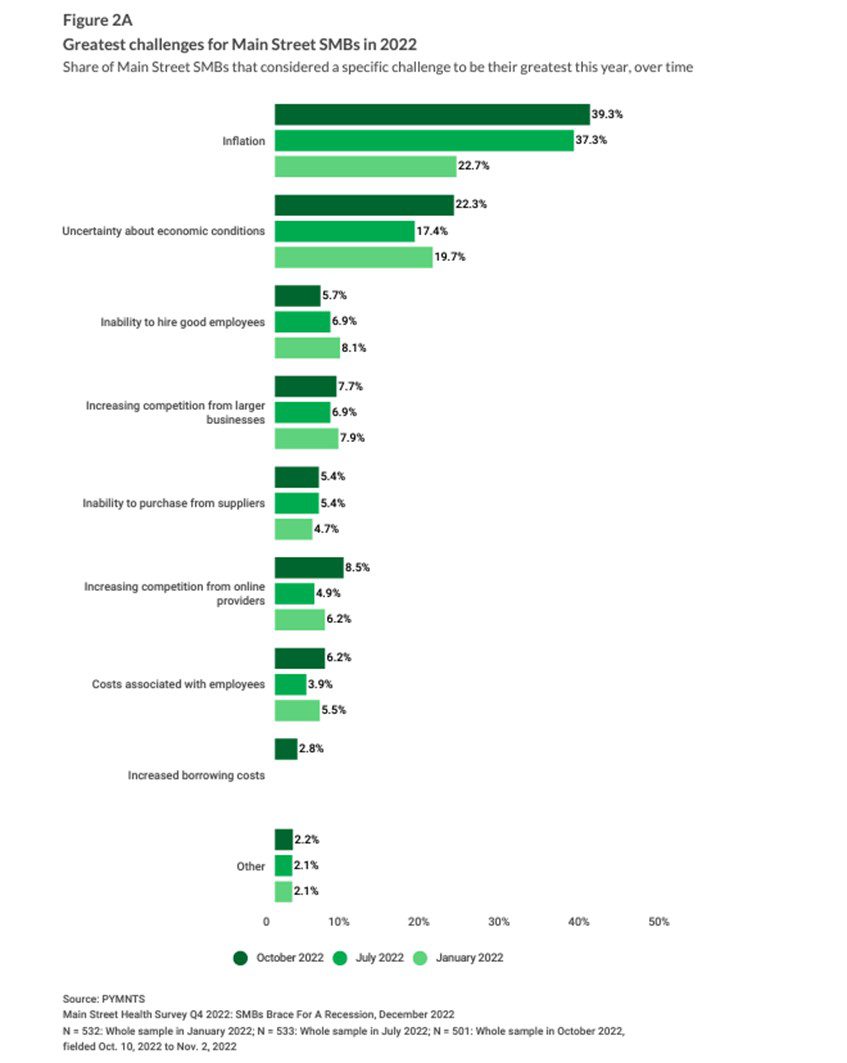As Shipping Costs Drop, Savvy Retailers Lower Prices to Consumers
Amidst a year-plus of grim headlines, retailers could use a bit of good news.
As reported by WSJ earlier this week (Feb. 27), shipping rates, especially along the all-important trans-Pacific route, have tumbled in recent months from their record highs last year. U.S. retailers are hoping to solidify the price plunge this week, when they sit with carriers to lock in long-term contracts. In some cases, shipping costs could drop by half or more and lead to retailers of all sizes seeing significant savings.
For small business retailers running on tighter margins than their larger competitors, lower shipping costs could be the factor that tips their make-or-break situation toward survival. As noted in the PYMNTS’ “Main Street Health Survey,” concerns about rising overhead and revenue streams turning into trickles have been weighing heavily on the minds of those running Main Street SMBs.

While inflation remains SMBs’ top-cited challenge, last year’s shipping rate volatility was likely also driving some of the oft-cited concerns over economic uncertainty as well as difficulties purchasing from suppliers. On a larger scale, reduced shipping rates could have a ripple affect on inflation as well.
Retailers and merchants seeing any cost savings have a near-immediate loyalty opportunity in passing these savings along to their customers. More so than the latest convenience-driven innovation, U.S. consumers right now are prioritizing cost cutting as savings dwindle, wage increases slow and interest rates remain high. They have traded down the quality of their groceries to make ends meet and are foregoing large purchases and tiny luxuries. Smaller retailers can’t pass on the same discounts as larger players who bulk buy and have been caught between a cost rock and consumer hard place trying to remain profitable.
Plummeting shipping rates could be one of small business’ most promising customer traffic drivers since inflation took hold. Slashing price tags in accordance with lowered shipping costs may give them a competitive advantage. This is particularly true among peers who may remain reluctant to let go of revenue generated from higher consumer prices. Of course, retailers may also use these decreases to offset their higher overhead and related costs instead of passing the savings along to the consumer.
Popping the champagne or rushing into sales promotion before all deals are finalized may be premature, and potential costs related to delays should always be accounted for. So far, however, these upcoming contract negotiations seem to offer the real possibility of retailer relief.
